18 jun Examples of Manufacturing Overhead in Cost Accounting
Depreciation accounts for the gradual loss of value in machinery and equipment over time. UK accounting standards, like those set by the Financial Reporting Council (FRC), require businesses to reflect these costs accurately. For example, a manufacturer might use reducing balance methods to allocate depreciation for factory equipment, ensuring this expense is evenly spread across the useful life of the asset.
Product-Level vs. Factory-Level Overhead:
In manufacturing, the product cost includes direct materials, direct labor, and manufacturing overhead. A retailer’s product cost is the net cost from suppliers plus costs to get the product in place and ready for use (e.g. freight-in). As shown in the above table, each unit of Product X will be assigned $30 of overhead, and each unit of Product Y will be assigned $60 of overhead. This is reasonable so long as there is a what is periodic and interim reporting correlation between the quantity of direct labor hours and the cost of manufacturing overhead.
Do you already work with a financial advisor?
After determining the overhead absorption rate, apply it to products based on the actual amount of the cost driver used. Office supplies used within the manufacturing plant, such as paper, pens, and administrative materials, also fall under manufacturing overhead. These supplies, though not directly involved in production, support the overall operations and administrative functions within the facility. Indirect costs are essential for manufacturing but do not directly create a product. Generally Accepted Accounting Principles (GAAP) require including these costs to determine the true cost of production. By following these tips, businesses can manage their fixed and variable costs more effectively and improve their profitability.
- You don’t want the woodchips and bits to get everywhere, so you have a deal with a cleaning company – they come to sort things out and send a monthly invoice.
- The income statement, statement of cash flows, statement of retained earnings, and the statement of stockholders’ equity report information for a period of time (or time interval) such as a year, quarter, or month.
- Developing cost is the cost incurred for implementing or introducing new products, methods and new applications or uses for existing products.
- Thus, Marketing and selling overhead refer to indirect costs which are incurred for creating and stimulating demand, securing orders and retaining the customers.
- Manufacturing overhead is part of a company’s manufacturing operations, specifically, the costs incurred outside of those related to the cost of direct materials and labor.
- The overhead rate is then multiplied by the number of units produced to determine the amount of manufacturing overhead that is allocated to each unit.
Definition of Factory Overheads
To reduce manufacturing overhead costs, focus on optimizing efficiency by minimizing waste, improving energy usage, and automating routine tasks. Investing in modern MRP software can help you track indirect costs in real-time, identify areas of inefficiency, and streamline processes to lower expenses over time. Manufacturing overhead costs are indirect costs related to the production of processes, while total manufacturing costs encompass both direct and indirect expenses. Total manufacturing cost will give you a clear picture of your overall manufacturing costs, while manufacturing overhead can help you accurately determine the indirect costs of your manufacturing process. Companies can get a better understanding of their total manufacturing expenses by accounting for indirect materials, indirect labor, utilities, and depreciation. Proper management of manufacturing overhead leads to more accurate budgeting and improved financial performance.
How can MRP software streamline cost accounting?
Implementing comprehensive tracking systems to monitor expenses aids in identifying inefficiencies and cutting unnecessary costs. Some overheads can also be deemed semi-variable to further increase the accuracy of the manufacturing overhead rate. These costs partially depend on production levels but incur a base cost regardless of production activity. Companies must be able to respond quickly to changing market conditions to maintain profitability.
By following these tips, manufacturers can overcome the challenges of managing manufacturing overhead and improve their profitability. The packaging materials are product-level overhead, because they can be traced directly to the production of each t-shirt. The cost of the cotton fabric and thread are direct costs, because they can be directly traced to the production of each t-shirt. Overhead costs can be fixed, variable, or semi-variable, depending on how they change with production levels. It is important for manufacturers to understand and manage manufacturing overhead because it can have a significant impact on the cost of goods sold.
Cash Flow Optimization: Essential Strategies for Optimizing Your Business Finances
- This is either because they are difficult to track, they are not used directly in the manufacturing process, or they are used sporadically or in insignificant quantities per product.
- Overall, the future of manufacturing overhead is likely to be characterized by a focus on efficiency, technology, and cost reduction.
- Factory rent and property taxes are significant components of manufacturing overhead.
- This allocation aims to help managers make more accurate decisions about product pricing and production levels.
- Indirect costs are essential for manufacturing but do not directly create a product.
Of course, it’s not how to write an analysis essay going to be a core piece of information for your running of the business, but the effects on your profit margins will be there. First, of course, we are talking here only about indirect costs linked to manufacturing (so forget marketing, sales, or administration). Understanding manufacturing overhead is essential for any business, so it’s well worth learning how to use this formula in budgeting. Let’s look at some manufacturing overhead cost examples when it comes to materials. It might seem strange to think about, but it makes a lot of sense when you draw it out.
By understanding and managing manufacturing overhead costs, manufacturers can improve their profitability and competitiveness. Fixed overhead costs per unit decreases as production increases and increases as production decreases as production increases and increases as production decreases. Examples of fixed expenses are rent of building, salaries of managers, allowances of directors, bank charges, stationary, insurance, etc.
Manufacturing Overhead – Formula, Examples, And More – Conclusion
Modern manufacturing software is invaluable for automating cost accounting and improving the accuracy of overhead allocation. Manufacturing overhead, also known as factory overhead or manufacturing support costs, is the indirect cost of the production process. This can include expenses such as a supervisor’s salary or the annual lease of your production facility. Understanding and managing manufacturing overhead is crucial for businesses to accurately determine production costs and improve budgeting. Companies can enhance their financial health and operational efficiency by calculating overhead accurately and employing online invoicing portal effective cost-management strategies.
While this approach helps streamline budgeting, estimated overhead is only a projection. The actual costs will vary, requiring adjustments during the reconciliation process at the end of the period. As the name implies, fixed overheads remain the same regardless of production volume and other fluctuations in business activities.



